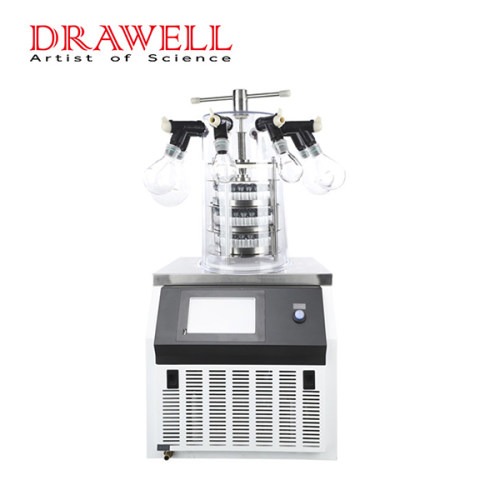The laboratory freeze dryer, is a cutting-edge device integrating refrigeration, vacuum, heat conduction oil heating, and dehumidification systems for the drying of high-grade materials like medicines, marine organisms, and pharmaceutical intermediates. As the freeze-drying industry expands, it is crucial to address common problems that may arise during its usage, ensuring seamless operation. Let's delve into the widespread applications of freeze dryers and explore practical solutions to potential issues.

Wide Applications of Freeze Dryers:
The primary application scenario for freeze dryers is laboratories, particularly in the drying of high-grade raw materials crucial to various industries. Over the past decade, the freeze-drying industry has experienced rapid development, expanding its field of application. In life science research, vacuum freeze-drying technology plays a pivotal role in antibody, protein, tissue, and microorganism research, making it integral to biopharmaceuticals. Additionally, the pharmaceutical industry widely employs freeze-drying for the preparation of vaccines and antibiotics.

Common Problems and Solutions:
Indoor Temperature Exceeds 30°C:
Issue: The condenser may fail to exert the condensing effect when the indoor temperature surpasses 30°C.
Solution: Maintain an indoor temperature around 28°C by optimizing ventilation conditions. This can be achieved by opening the back door of the condenser or the room door to enhance airflow and cooling.
High Environmental Humidity:
Issue: Elevated humidity levels can lead to electrical failures or short circuits.
Solution: Mitigate humidity issues by incorporating ventilation equipment or opening windows to improve airflow and reduce moisture.
Unstable Power Supply Voltage:
Issue: Deviation from the average working power supply voltage (215V-380V) can render the compressor ineffective.
Solution: Replace the power supply with a qualified one when the voltage is outside the acceptable range. To address varying power supply voltage, consider adding an AVR (220V) or a voltage stabilizer to maintain stability.
Excessive Dust on the Freeze Dryer or in the Environment:
Issue: Accumulated dust on the condenser and compressor can hinder condensation efficiency, impacting the compressor's performance.
Solution: Regularly remove dust from the compressor and condenser covers every month, especially in environments with high dust levels. Use a soft brush to prevent damage to the freeze dryer while cleaning the compressor, condenser, and pipelines.
Ensuring the optimal functionality of freeze dryers involves proactive maintenance and addressing issues promptly By understanding and implementing these solutions, users can enhance the reliability and efficiency of freeze dryers, ensuring their continued success in various scientific and industrial applications.